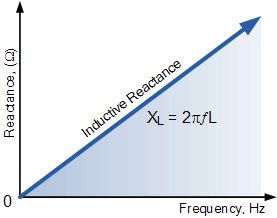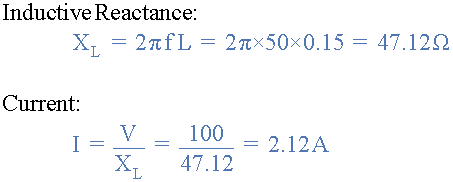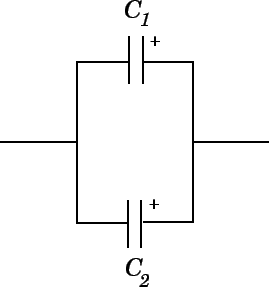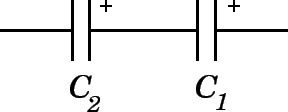Capacitive Reactance against Frequency
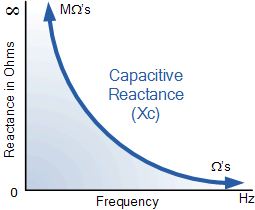
By re-arranging the reactance formula above, we can also find at what frequency a capacitor will have a particular capacitive reactance ( XC ) value.
Example No2 – At which frequency would a 2.2uF Capacitor have a reactance value of 200Ωs?

Or we can find the value of the capacitor in Farads by knowing the applied frequency and its reactance value at that frequency.
Example No3 – What will be the value of a Capacitor in farads when it has a capacitive reactance of 200Ω and is connected to a 50Hz supply.

We can see from the above examples that a capacitor when connected to a variable frequency supply, acts a bit like a “frequency controlled variable resistor”.
At very low frequencies, such as 1Hz our 220nF capacitor has a high capacitive reactance value of approx 723KΩs (giving the effect of an open circuit).
At very high frequencies such as 1Mhz the capacitor has a low capacitive reactance value of just 0.7 ohms (giving the effect of a short circuit).
At zero frequency or steady state DC the capacitor has infinite reactance looking more like an “open-circuit” between the plates and blocking any flow of current through it.
 .
. are components of
are components of
 .
.

 and inductive reactance
and inductive reactance
 contribute to the total reactance
contribute to the total reactance

 is the angular frequency,
is the angular frequency,
 times the frequency in Hz
times the frequency in Hz ,
the reactance is said to be
,
the reactance is said to be
 ,
then the impedance is purely
,
then the impedance is purely
 ,
the reactance is said to be
,
the reactance is said to be
 (or
(or
 .
.
